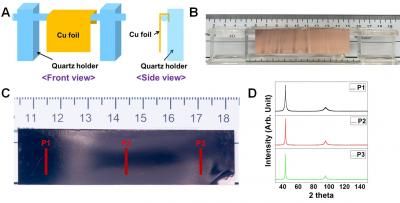Cobalt-Controlled Communication
Fine Performance Tuning of an Organometallic Molecular Wire by Added Dicobalt Fragments
Advertisement
Smaller and smarter: this is the aim of research in the quest for ever faster electronic devices smaller in size but capable of performing more complicated tasks. Devices consisting of the smallest possible components, molecular parts, have emerged as the answer. Molecular wires, the most basic components of molecular electronic circuits, need to be accurately adjusted for optimal performance. Y. Tanaka, T. Koike, and M. Akita of the Chemical Resources Laboratory, Tokyo Institute of Technology, reveal the key factor for tuning wire-like performance in the Short Communication published in the European Journal of inorganic chemistry.
The factors affecting the communication performance of molecular devices are important for the development of molecular electronics. Parts of molecular electronic circuits (wires, switches, resistors, diodes, etc.) must have adjustable electronic properties to optimize this communication. Akita et al. prepared a molecular wire containing a C?C moiety between two iron centers. The communication between the iron centers was modified by coordination of a dicobalt cluster to the C?C part of the wire. Fine tuning was achieved by attaching, removing, or replacing the ligands on the added cobalt system as needed, which changed the electronic properties of the Co atoms with respect to those of the Fe atoms, thus controlling the transfer of electrons between the iron centers over a path through the cobalt atoms. In contrast to the direct Fe–Fe transition mechanism for the diiron wire, the communication mechanism of the dicobalt adducts involved indirect Fe–Co–Fe electron transfer. The mixed-valence characteristics of the compounds were studied by electrochemical and spectroscopic methods. The diiron compound belongs to Robin–Day Class III, and the dicobalt adducts have properties that place them between Class IIA and IIB. All molecular wires reported in this paper can be interconverted easily in a reversible manner.
The most important contribution of this study to the understanding of fine tuning of molecular devices is the key role played by the donor properties of the ligands attached to the cobalt fragments on the path between the two communicating iron centers. It was demonstrated that the properties of electron transfer through the molecular wire could be adjusted by tailoring the electronic properties of these ligands.
Original publication: Munetaka Akita et al.; "Title: Reversible, Fine Performance Tuning of an Organometallic Molecular Wire by Additi on, Ligand Replacement and Removal of Dicobalt Fragments"; European Journal of Inorganic Chemistry , 2010, No. 23, 3571–3575.
Most read news
Organizations
Other news from the department science

Get the chemical industry in your inbox
By submitting this form you agree that LUMITOS AG will send you the newsletter(s) selected above by email. Your data will not be passed on to third parties. Your data will be stored and processed in accordance with our data protection regulations. LUMITOS may contact you by email for the purpose of advertising or market and opinion surveys. You can revoke your consent at any time without giving reasons to LUMITOS AG, Ernst-Augustin-Str. 2, 12489 Berlin, Germany or by e-mail at revoke@lumitos.com with effect for the future. In addition, each email contains a link to unsubscribe from the corresponding newsletter.




























































